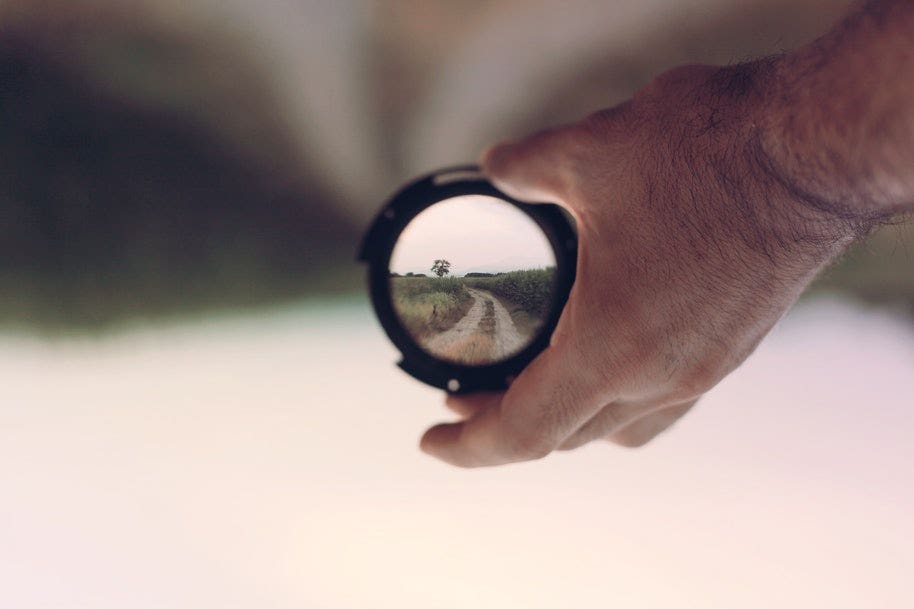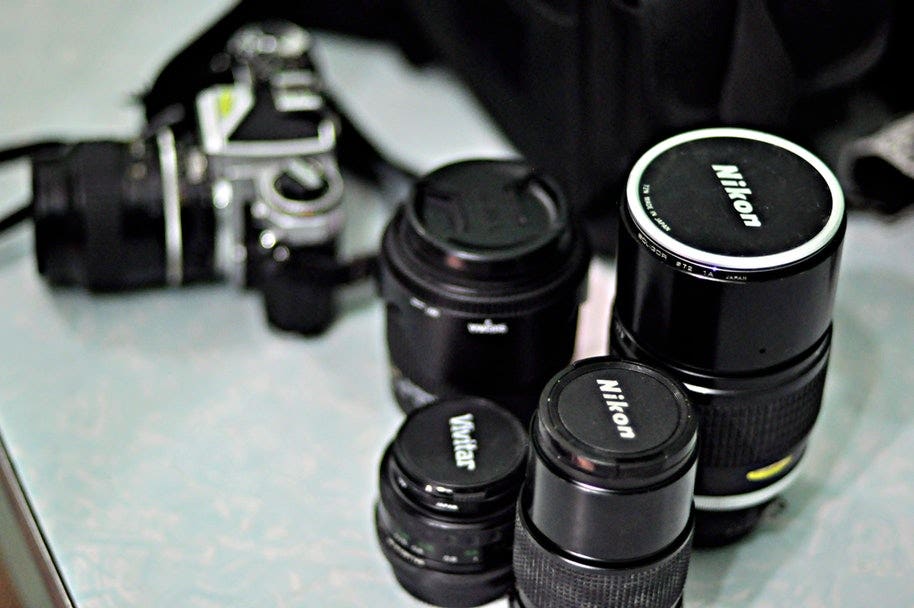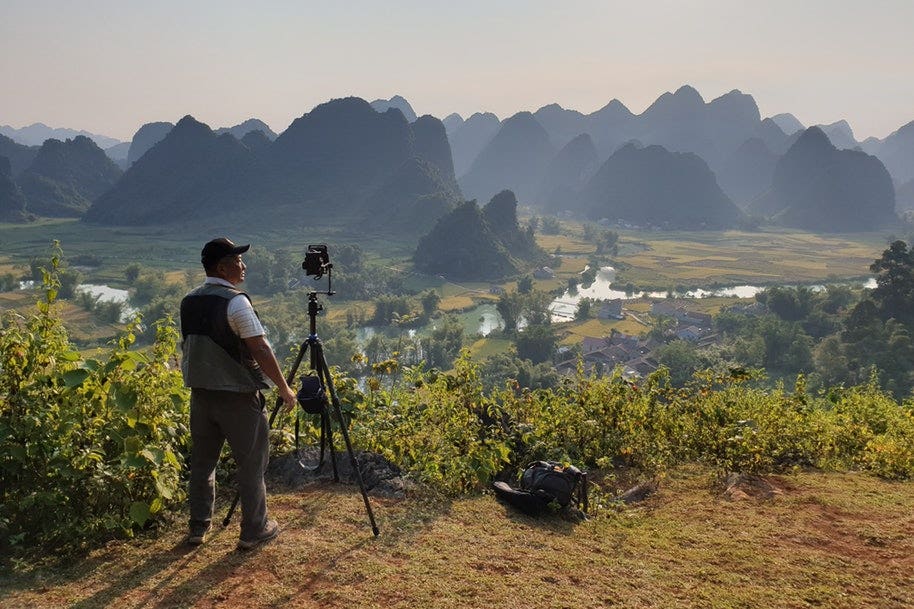
With a growing market for mirrorless cameras and almost yearly improvements on their design and technology, it’s become increasingly difficult to differentiate between these cameras and DSLRs.
Each camera style comes with its own advantages and disadvantages which makes it nearly impossible to state categorically which one is best.
That decision comes down to you and your own photography needs. So we’ve listed some of the key differences between DSLR and mirrorless cameras to help you figure out which will answer your needs the most.

Understanding DSLR and mirrorless cameras
Digital single-lens reflex (DSLR) cameras have been around for decades and have long had a stronghold over the professional photography market.
DSLR cameras have a mirror inside the body that reflects light coming through the lens, projecting the image into the optical viewfinder. When you press the shutter release, the mirror flips up out of the way allowing the light to hit the image sensor.
Mirrorless cameras, also called compact system cameras or simply CSCs, don’t have that internal mirror. Instead, the light hits the image sensor directly and the image sensor provides you with a preview on the LCD screen or an electronic viewfinder.
The absence of a mirror means mirrorless cameras can be incredibly compact. Yet you can still change the lenses, which makes them strong competitors to DSLRs.
Focusing: Phase Detection vs Contrast Detection
How powerfully a camera autofocuses depends on the type of autofocus (AF) system it uses. There are two main standards: phase detection and contrast detection.
Phase detection compares two versions of the same subject from two different angles to calculate the right focus and is much faster but less accurate as a result.
Alternatively, contrast detection uses the camera’s image sensor to measure the highest point of contrast as the lens shifts through its focusing range. It can be more precise, but sluggish and inefficient.
A DSLR uses phase detection AF modules that sit beneath the mirror in the body. While this means the system only works when the mirror is down, it has proven an incredibly fast and efficient system.
This system keeps DSLRs a popular choice for action, sports, or wildlife photography, all of which require speedy focusing on fast-moving objects.
But it’s not as categorical as that. If you choose to shoot in ‘Live View’ mode on your DSLR (for example, by composing a picture or video on your LCD screen), the mirror remains flipped up and the DSLR switches to a sluggish contrast detect AF system.

Meanwhile, mirrorless systems have relied on a contrast detect AF system, which generally runs faster than equivalent modes on DSLRs. But it can be painfully slow, with the camera shuffling through its focus till it finds the right distance.
Compact system cameras are gaining ground over DSLRs, with recent models like the Fujifilm X-T30 providing hybrid AF systems that combine contrast and phase detect AF modes for fast and accurate focusing.
On the other hand, Canon has begun introducing DSLRs with Dual Pixel CMOS AF, which builds phase-detection pixels into the sensor for faster autofocusing in Live View mode.
Optical vs electronic viewfinders
Optical viewfinders are an integral part of a DSLR’s design while mirrorless cameras have electronic viewfinders (EVFs), if they have one at all.
With optical viewfinders, the image you see is exactly the image you’re capturing, because the scene from the lens is reflected off a mirror inside your camera system.
Optical viewfinders are known for their clarity. One of their biggest advantages is that there’s none of the lag you can get in the electronic viewfinders when you’re following a subject.
And today, optical viewfinders are fairly sophisticated too, with illuminated LED panels that overlay more information and details within the viewfinder.

On the other hand, the electronic viewfinders you get in mirrorless cameras display the image from the information the sensor collects. It’s digitalised.
The advantage of this is that it can display far more information, including live image histograms and autofocusing assistance. You can also view any changes you make to your exposure, white balance, or colour settings instantly in the viewfinder.
Battery life in DSLRs vs mirrorless cameras: Which is better?
The battery life of DSLRs vs mirrorless cameras depends on the camera’s mechanisms; most notably, the need for an LCD screen or electronic viewfinder.
Both these digital screens eat up a lot of power. So naturally, cameras that rely less on their use are likely to fare better with battery life.
You can shoot DSLRs just using the optical viewfinder, which means you can get an average 600 to 800 shots with a single battery charge. The Nikon D6 DSLR is capable of an incredible 3,580 shots per charge.
But with a mirrorless camera, you need to activate either the LCD screen or the EVF to see what you’re shooting. This gives a compact system camera an average battery life of between 300 and 400 shots per charge. Higher end models may be capable of between 600 and 700 shots.
Fortunately, it’s possible to buy spare batteries for both DSLRs and mirrorless cameras, making this a potentially moot issue.
DSLRs vs mirrorless cameras: On size and weight
One of the main selling points of mirrorless cameras is their compact size (at least, it was in the beginning).
Thanks to their mirror and prism mechanism, DSLR camera bodies are typically bulky and heavy to carry.
And because compact system cameras can do away with the mirrors (and often the viewfinder too), they can be almost pocketable.
Emphasis on the ‘can be’ in that last sentence. As more and more professionals favour mirrorless cameras, the camera specs are climbing ever higher.
Full frame mirrorless cameras (like the Sony Alpha A7R IV and the Canon EOS R), along with their lenses, can be almost as bulky as their DSLR counterparts.
What you gain in compact size you typically lose in camera sensor size, battery size, and other external fittings.

It’s worth noting too that compact doesn’t necessarily mean good.
Many photographers prefer the solid grip you get from having a bulkier DSLR camera in their hand. The larger controls are more user-friendly for those with bigger hands and there’s no doubt big telephoto lenses are more suited to bigger bodies.
If your priority is to have a high-quality camera with a compact body, consider buying a Panasonic or Olympus mirrorless camera. These brands have Micro Four Thirds sensors that are smaller than APS-C and full frame sensors, with lightweight lenses to match.
Many entry-level DSLRs, such as the Nikon D3500 or the Canon EOS 2000D are also being reduced in size to compete against their more compact mirrorless counterparts.
DSLR vs mirrorless camera lens range
While a lot of people put their attention into the camera body when making a decision between mirrorless vs DSLR, the lenses might actually prove a bigger deal breaker.
With their long history of production, most DSLR models have a huge range of branded and third-party lenses to call upon. Just think that the Nikon lens mount hasn’t changed since 1959!
Canon and Nikon DSLRs provide the widest possible range of lenses on the market today.

On the other hand, mirrorless cameras haven’t had much more than a decade to work on their lens range. But the selection is growing.
Sony is particularly renowned for its already impressive full-frame FE mount for its mirrorless cameras.
Mirrorless cameras ahead of the game on video tech
Perhaps surprisingly, high-end compact system cameras are actually a better choice for aspiring videographers.
Mirrorless camera manufacturers have paid attention to this long-neglected field from almost the beginning of mirrorless design, so they’ve stayed ahead of DSLRs in terms of video technology.
The traditional technology of DSLRs lets them down in this arena. The native mirror system means that the mirror needs to lock into place to continuously expose the sensor for video recording.
DSLRs weren’t made for this kind of functionality. While some DSLRs are starting to feature phase detection autofocus in their sensors, most still rely on the less accurate and slower contrast detection AF for filming.
Meanwhile, the on-sensor autofocus system in mirrorless cameras with their constant ‘live view’ capabilities makes them more compatible for capturing video.
And to round it off, you’re far more likely to find 4K capture as a feature of mirrorless cameras than DSLRs at this point in time.
Mirrorless and DSLR image quality on par
The difference between the image quality of DSLR vs mirrorless cameras has narrowed dramatically.
Image quality normally comes down to the type of sensor the camera has, with full frame sensors offering the best standard and APS-C a close (but more affordable) runner up.
All DSLRs use either these sensor types but mirrorless cameras are now in on the game. Since these cameras are using the same sensor type, you’ll find it hard to notice any difference in image quality.

Another judge of image quality comes in the number of megapixels a sensor has. In this case, the mirrorless Fujifilm GFX 100 is currently the best on the market (with a price tag to match) with a 102MP sensor.
Meanwhile, the more affordable Sony A7R IV mirrorless camera has a 61MP sensor. The nearest DSLR is the Canon EOS 5DS and the Canon 5DS R with their 50.6MP sensors.
Mirrorless vs DSLR cameras: What’s the best value?
When it comes to professional or even enthusiast cameras, there’s little difference in price between DSLRs and mirrorless cameras.
You’ll get the same degree of performance, image quality, power, and features for similar price points across the different ranges.
But if you’re just looking for a fun hobby and you want to give an interchangeable camera a go, you might want to stick to DSLR cameras.
It’s generally easier to find entry-level DSLRs at a cheaper price than their equivalent competitors in the mirrorless range.
For a huge range of compact system cameras & DSLRs, be sure to check out our online store or head into your local Camera House shop to get more expert advice from our staff.
